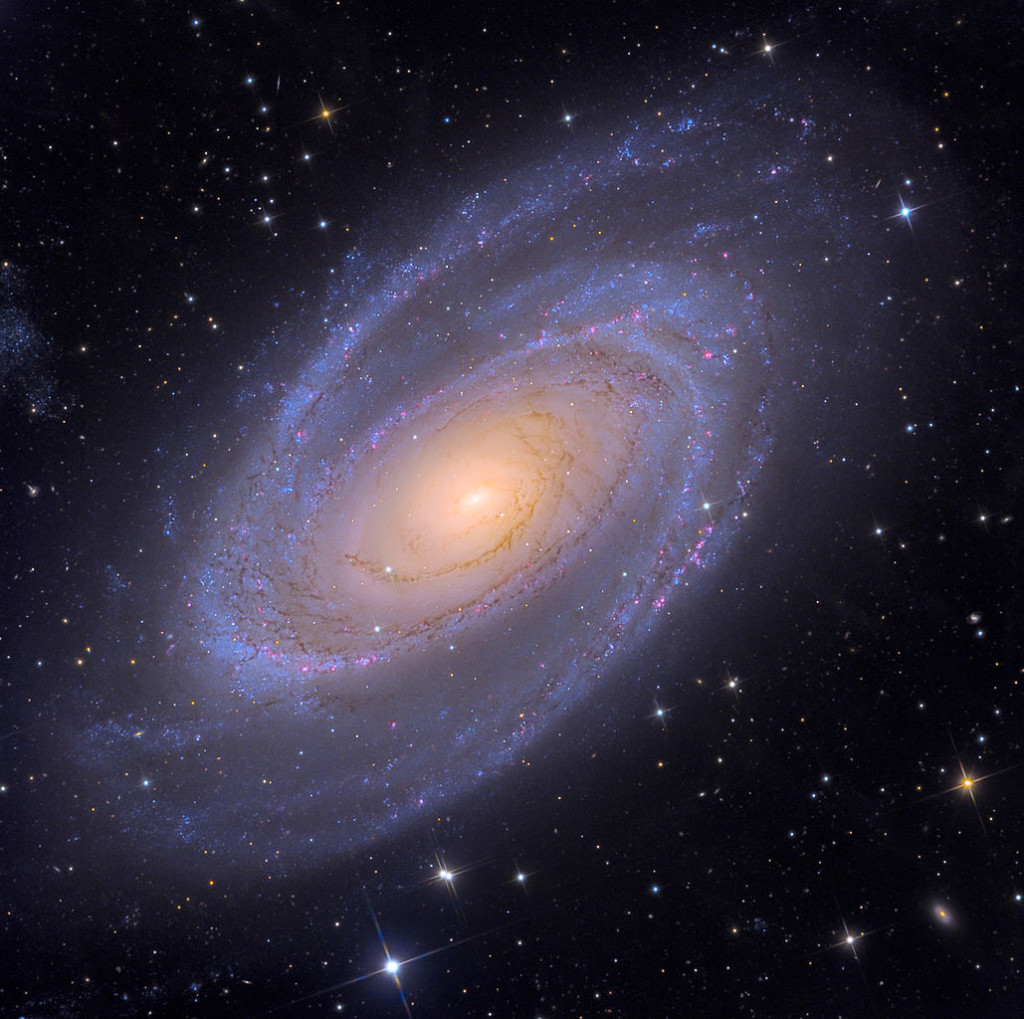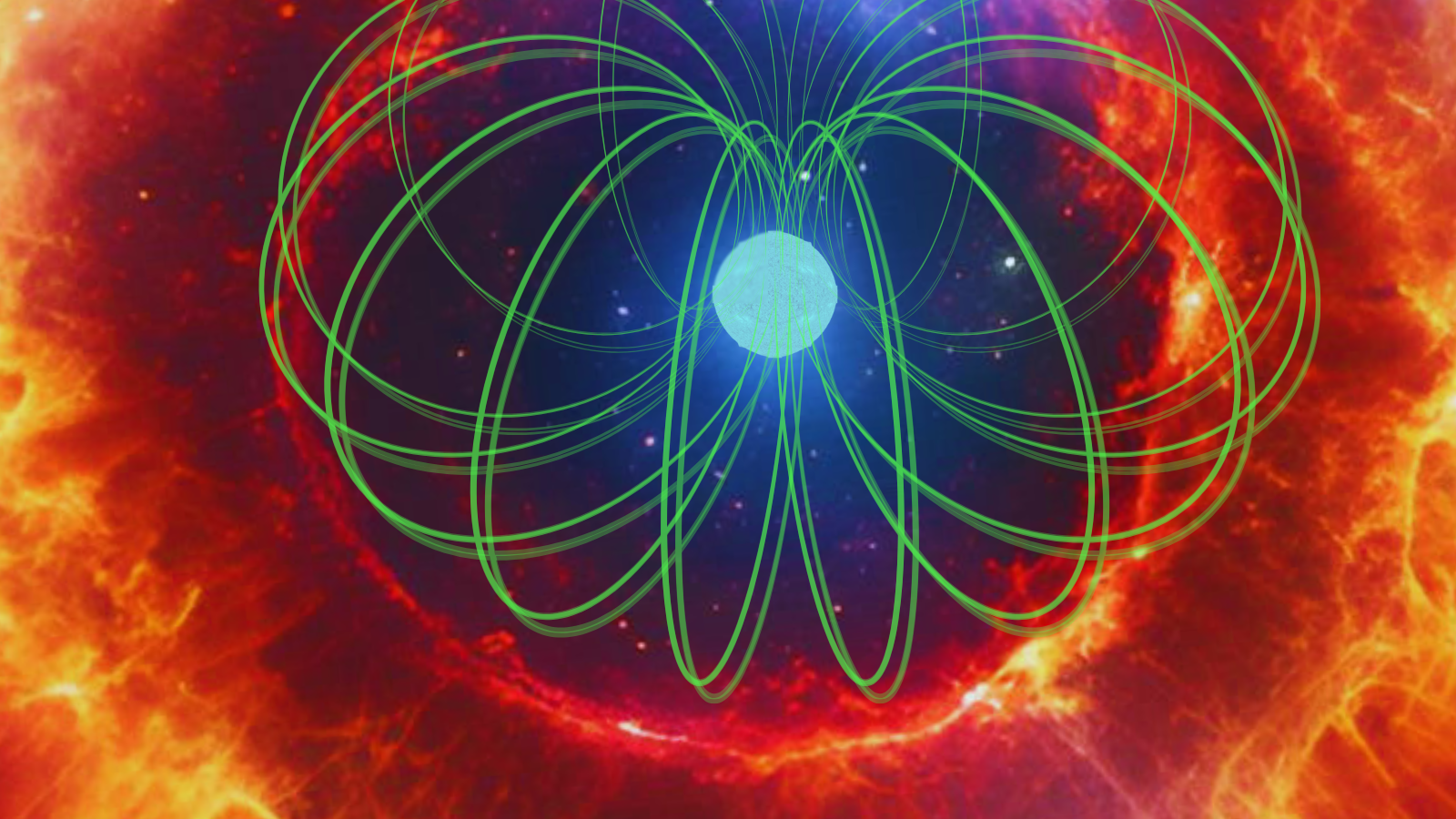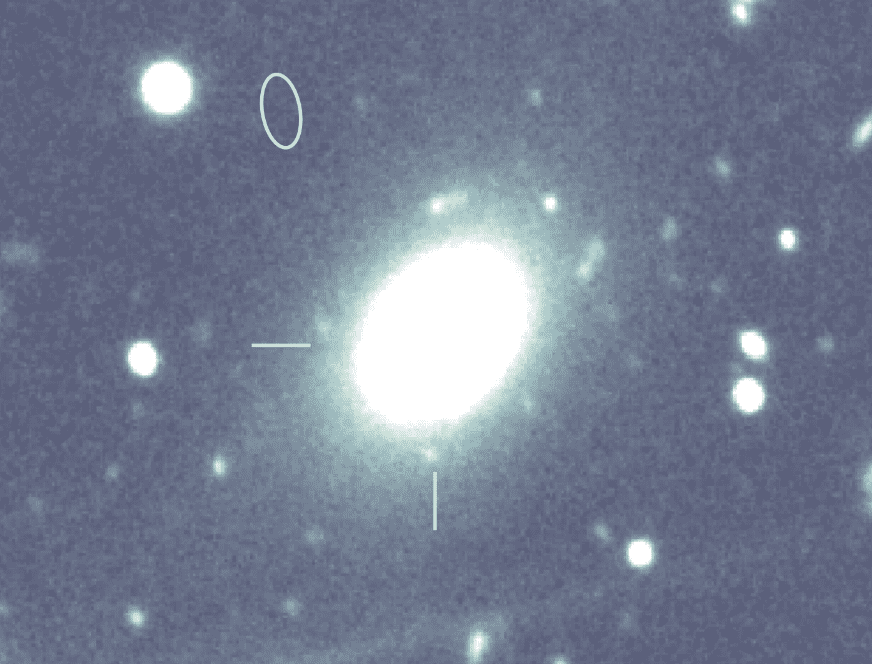Astronomers have been forced to reassess the origins of mysterious, rapid radio wave blasts called “fast radio bursts” (FRBs).
This rethink was brought about by an FRB first detected last year, which has been traced back to the “cosmic graveyard” of a massive “dead” galaxy filled with ancient stars located 2 billion light-years from Earth.
FRBs are usually attributed to the supernova deaths of massive young stars in younger galaxies experiencing bouts of star formation. This event also triggers the birth of highly magnetic neutron stars, or “magnetars.” However, this FRB source galaxy appears to lack such elements, meaning FRB-producing events may be more diverse than previously thought.
“This new FRB shows us that just when you think you understand an astrophysical phenomenon, the universe turns around and surprises us,” team member and Northwestern University scientist Wen-fai Fong said. “This ‘dialogue’ with the universe is what makes our field of time-domain astronomy so incredibly thrilling.”
A mysterious repeating radio signal
This theory-altering research began in Feb. 2024 when the Canadian Hydrogen Intensity Mapping Experiment (CHIME) detected a new FRB, which was later designated FRB 20240209A.
Most FRBs flare once, lasting mere milliseconds and emitting more energy than the sun radiates in a year. However, FRB 20240209A flared repeatedly, with the same source generating 21 pulses between February and July 2024.
Six of these pulses were detected by a smaller version of CHIME, an “outrigger” telescope located around 37.3 miles (60 kilometers) from the main instrument. These outriggers exist to allow astronomers to pinpoint the source of the FRBs CHIME detects. Thus, the team was able to do this backtracking exercise for FRB 20240209A.
With the source of FRB 20240209A located, the team performed follow-up observations with the W.M. Keck and Gemini observatories to learn as much as they could about its environment.
If the scientists were expecting a young galaxy like the typical FRB source, they were in for a surprise. Their follow-up investigation showed FRB 20240209A originated from the edge of an 11.3-billion-year-old galaxy.
The team set about learning more about this galaxy by performing advanced computer simulations. This revealed that the galactic host of this FRB is extremely luminous and has a mass of around 100 billion times the mass of our sun.
“It seems to be the most massive FRB host galaxy to date,” team member and Northwestern Center for Interdisciplinary Exploration and Research in Astrophysics (CIERA) scientist Tarraneh Eftekhari said. “It’s among some of the most massive galaxies out there.”
An FRB on the edge
The source of this FRB within the galaxy also presents a conundrum. That is because FRBs usually originate well within their galaxies. FRB 20240209A, however, came from the outskirts of its host galaxy, around 130,000 lightyears from the galactic center.
“Among the FRB population, this FRB is located the furthest from the center of its host galaxy,” said Vishwangi Shah, a graduate student at McGill, who led the effort to pinpoint the source of FRB 20240209A. “This is both surprising and exciting, as FRBs are expected to originate inside galaxies, often in star-forming regions.
“The location of this FRB so far outside its host galaxy raises questions as to how such energetic events can occur in regions where no new stars are forming.”
Prior to this, only one FRB had ever been traced to the outer limits of a galaxy.

In 2022, FRB 20200120E was traced to a dense star cluster, or globular cluster, on the outskirts of Messier 81 (M81), a spiral galaxy around 12 million light-years from Earth in the constellation Ursa Major.
Despite emerging from very different galaxies, FRB 20240209A and FRB 20200120E shared many similarities.
“A few years ago, the M81 FRB was surprisingly discovered within a dense cluster of stars called a globular cluster,” Fong said. “That event single-handedly halted the conventional train of thought and made us explore other progenitor scenarios for FRBs.”
Since FRB 20200120E was detected, no FRB had like it had been observed. That led Fong and the team to believe FRB 20200120E was a one-off discovery — until now.
“In fact, this CHIME FRB could be a twin of the M81 event. It is far from its home galaxy, far away from where any stars are being born, and the population of stars in its home galaxy is extremely old. It’s had its heyday and is now coasting into retirement,” Fong said. “At the same time, this type of old environment is making us rethink our standard FRB progenitor models and turning to more exotic formation channels, which is exciting.”
FRBs without the supernovas
Thus far, around 100 FRBs have been linked to a galactic host, and most of these have been connected to a magnetar — a highly magnetic form of neutron star.
Like all neutron stars, magnetars are formed when massive stars run out of their fuel for nuclear fusion. This means the outward flow of energy that supports them against collapse is cut off, and the star can no longer support itself against the crushing inward force of its own gravity.
As the star’s core rapidly crushes down to form a neutron star, the outer layers and most of the star’s mass are blown away in a core-collapse supernova.

“The prevailing theory is that FRBs come from magnetars formed through core-collapse supernovae,” Eftekhari said. “That doesn’t appear to be the case here. While young, massive stars end their lives as core-collapse supernovae, we don’t see any evidence of young stars in this galaxy.
“Thanks to this new discovery, a picture is emerging that shows not all FRBs come from young stars. Maybe there is a subpopulation of FRBs that are associated with older systems.”
The researchers believe that just like FRB 20200120E, FRB 20240209A may have come from a globular cluster. This is significant because globular clusters are associated with other powerful events associated with older stars, including the collisions and mergers of two neutron stars or a white dwarf collapsing under its own gravity. Events that could also give rise to FRBs.
“A globular cluster origin for this repeating FRB is the most likely scenario to explain why this FRB is located outside its host galaxy,” Shah said. “We do not know for a fact if there is a globular cluster present at the FRB position and have submitted a proposal to use the James Webb Space Telescope for follow-up observations of the FRB location. If yes, it would make this FRB only the second FRB known to reside in a globular cluster.
“If not, we would have to consider alternative exotic scenarios for the FRB’s origin.”
“It’s clear that there’s still a lot of exciting discovery space when it comes to FRBs and that their environments could hold the key to unlocking their secrets,” Eftekhari concluded.
The team’s research was detailed at the end of January in two papers published in The Astrophysical Journal Letters.
Source link
Read More
thesportsocean
Read our previous article: Ancient lizard traps are ecologically important habitat
